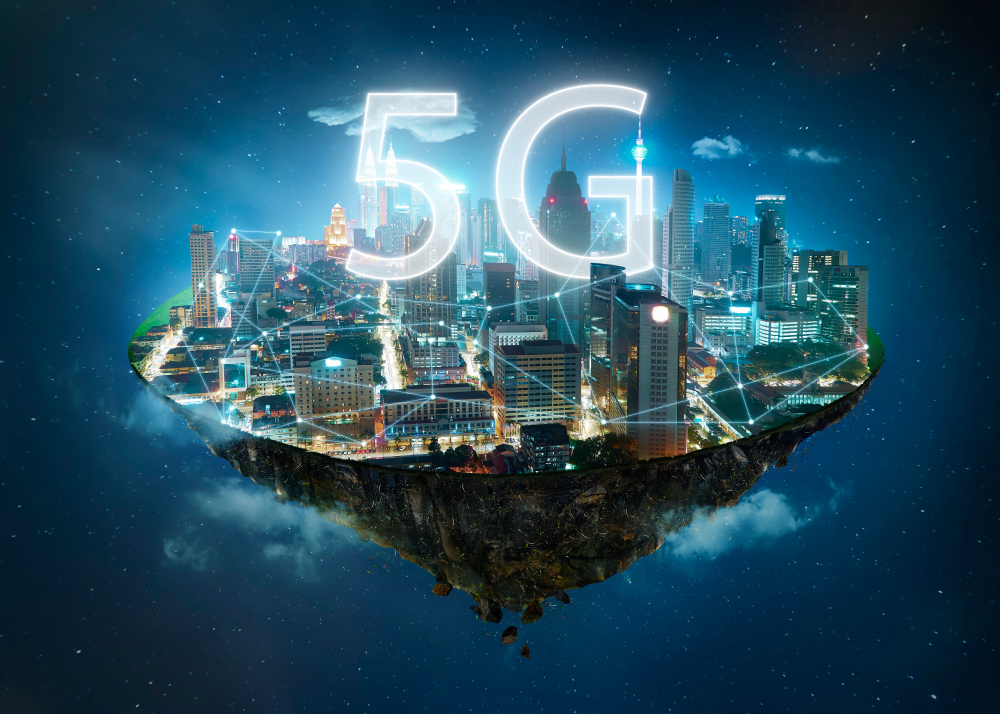In the ever-evolving landscape of telecommunications, 5G technology stands as a beacon of innovation, promising to revolutionize the way we connect, communicate, and interact with the world around us. With its potential to deliver unprecedented speed, reliability, and capacity, 5G technology represents a quantum leap forward in the evolution of wireless networks. In this extensive exploration, we will delve deep into the realm of 5G technology, unraveling its underlying principles, examining its transformative capabilities, and exploring the myriad applications that await in the era of ultra-fast connectivity.
Understanding 5G Technology:
At its core, 5G technology is the fifth generation of wireless cellular networks, succeeding its predecessors 4G LTE and 3G. Unlike previous generations, which focused primarily on delivering faster data speeds and increased bandwidth, 5G technology is designed to enable a wide range of applications beyond traditional mobile communications. It achieves this through several key technological advancements:
- Higher Frequencies: 5G networks utilize higher-frequency radio waves, including millimeter-wave (mmWave) bands, which enable faster data transmission speeds and lower latency compared to previous generations. These higher frequencies allow for greater data capacity and bandwidth, making it possible to support a massive increase in connected devices and data-intensive applications.
- Massive MIMO: 5G networks employ Massive Multiple Input Multiple Output (MIMO) technology, which uses multiple antennas to transmit and receive data simultaneously, increasing network capacity and spectral efficiency. Massive MIMO enables higher data rates, improved coverage, and better reliability, particularly in densely populated urban areas.
- Network Slicing: 5G technology introduces the concept of network slicing, which allows operators to partition the network into virtualized, independent slices tailored to specific use cases or applications. This enables customized service levels, quality of service (QoS) guarantees, and network optimization for diverse applications, such as autonomous vehicles, smart cities, and industrial IoT.
- Low Latency: One of the defining features of 5G technology is its ultra-low latency, or the time it takes for data to travel between devices and the network. With latency reductions of up to 10 times compared to 4G LTE, 5G networks enable real-time responsiveness and instantaneous communication, making it suitable for applications that require low latency, such as autonomous vehicles, remote surgery, and augmented reality.
The Transformative Potential of 5G:
The advent of 5G technology holds the promise of transformative impact across various industries and sectors, including:
- Telecommunications: 5G technology is poised to revolutionize the telecommunications industry by enabling faster download and upload speeds, smoother streaming, and enhanced mobile experiences for consumers. With 5G, users can enjoy seamless connectivity and immersive multimedia experiences on their smartphones, tablets, and other connected devices.
- Internet of Things (IoT): 5G technology provides the foundation for the proliferation of IoT devices and applications, enabling seamless connectivity and communication between billions of connected devices. From smart homes and wearables to industrial sensors and autonomous machines, 5G networks support the massive scale and diverse requirements of the IoT ecosystem.
- Autonomous Vehicles: 5G technology plays a critical role in the development and deployment of autonomous vehicles (AVs), enabling real-time communication between vehicles, infrastructure, and traffic management systems. With ultra-low latency and high reliability, 5G networks support advanced driver assistance systems (ADAS), vehicle-to-everything (V2X) communication, and collaborative driving scenarios, paving the way for safer, more efficient transportation systems.
- Healthcare: In the healthcare sector, 5G technology facilitates remote patient monitoring, telemedicine, and virtual consultations, allowing healthcare providers to deliver high-quality care to patients regardless of their location. With 5G-enabled medical devices, wearable sensors, and remote diagnostics, healthcare professionals can remotely monitor vital signs, track patient health metrics, and intervene in real-time, improving patient outcomes and reducing healthcare costs.
- Smart Cities: 5G technology forms the backbone of smart city initiatives, enabling interconnected infrastructure, intelligent transportation systems, and data-driven decision-making. With 5G networks, cities can deploy smart sensors, cameras, and IoT devices to monitor traffic flow, manage energy consumption, and enhance public safety, creating more sustainable, efficient, and livable urban environments.
Challenges and Considerations:
While 5G technology holds immense promise, it also presents several challenges and considerations that must be addressed:
- Infrastructure Deployment: Deploying 5G networks requires significant investment in infrastructure, including the installation of new base stations, small cells, and fiber-optic cables. Ensuring adequate coverage and capacity, particularly in rural and underserved areas, poses logistical and economic challenges for network operators and policymakers.
- Spectrum Allocation: The rollout of 5G networks relies on the allocation of spectrum by regulatory authorities, which involves coordinating spectrum auctions, licensing, and spectrum sharing agreements. Spectrum availability, interference, and regulatory frameworks vary across regions and countries, impacting the pace and scope of 5G deployment.
- Security and Privacy: As 5G networks connect an increasingly diverse range of devices and applications, ensuring security and privacy becomes paramount. Threats such as cyberattacks, data breaches, and privacy violations pose risks to network integrity and user trust, requiring robust security measures, encryption protocols, and regulatory safeguards.
- Interoperability and Standards: Achieving interoperability and compatibility between different 5G networks, devices, and applications is essential for seamless connectivity and interoperable services. Developing global standards, protocols, and interoperability frameworks is critical for fostering innovation, competition, and consumer choice in the 5G ecosystem.
Conclusion:
In conclusion, 5G technology represents a monumental leap forward in the evolution of wireless communications, unlocking new realms of connectivity, innovation, and opportunity. With its unprecedented speed, reliability, and capacity, 5G promises to transform industries, reshape economies, and empower societies in ways previously unimaginable. As we embark on this journey into the era of ultra-fast connectivity, it is essential to address the challenges and considerations surrounding 5G deployment, ensuring equitable access, privacy, and security for all. By harnessing the transformative power of 5G technology responsibly and inclusively, we can build a more connected, intelligent, and sustainable future for generations to come.
